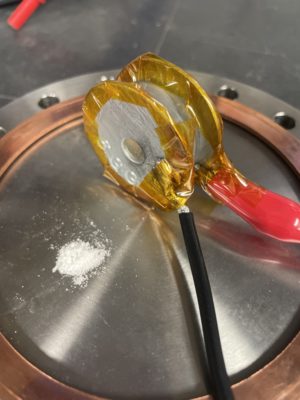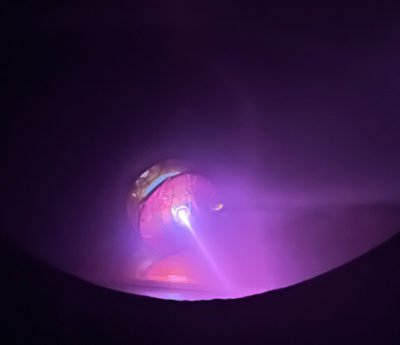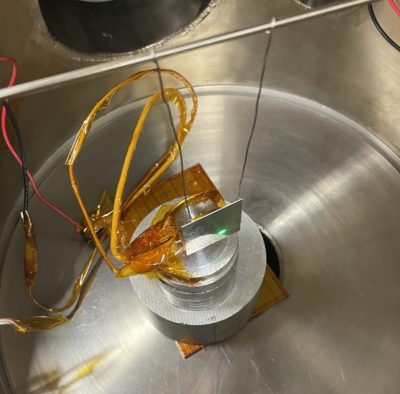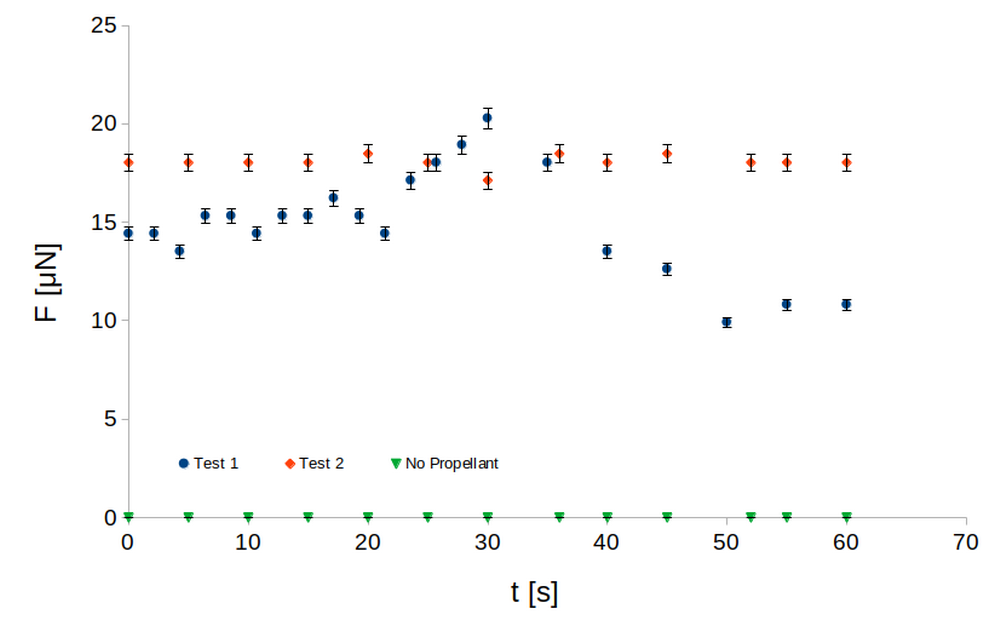Development of a Solid Fuel Adamantane Ion Thruster

Besides working with Dr. Wang’s graduate students on contamination and lunar regolith applications, I also started co-advising the USC undergraduate student club ASPEN. This club was founded by a former colleague of mine from AFRL days Matt Gilpin who also teaches at the university. ASPEN (with some current students shown below) was initially focusing on nuclear thermal propulsion. While that work is still ongoing, it also does not lead to many hands on testing opportunities. For the past few years I have been hearing promising findings about the use of Adamantane (C10H16) for plasma propulsion, mainly thanks to efforts of Michael Bretti from Applied Ion Systems. Hence, I suggested the students to look into building an “ion gun” thruster operating on this solid propellant and having the important characteristic of being as simple as possible. What I essentially envisioned is a device that stores the propellant in a hermetically sealed cavity. Once needed, the propellant “tank” interface is opened (with several different techniques currently under investigation). Adamantane readily sublimates even at room temperature without needing a heater. It is also easily ionized. The resulting plasma is then accelerated out of the device using an applied electric field, just as is the case in ion thrusters. The testing was performed with about 1.5 kV of potential difference and around 1 mA of current. These numbers come from the power supply settings, so take them with a grain of salt. Multimeter measurements are pending. The propellant valve is not expected to be reclosable and hence each thruster operates analogously to a solid rocket. Once lit, it delivers a prescribed impulse, expending all its propellant in the process. Multiple thruster bits can be combined into an assembly. Low power requirements would make the system compatible with Cubesats and other small satellites where it could be used for orbital changes or for decommissioning.


However, building the thruster was not my main motivation for starting the project. I instead wanted to give undergraduate students opportunity to gain experience working with vacuum systems, plasmas, and vacuum diagnostics. There is so much need nowadays for vacuum chamber experimentalists be it for the fusion community or to support the various space industry startups. However, most aerospace or astronautical undergraduate students tend to lack this hands on experience. So this seemed like a fun project that should give the students something fun to work on, and perhaps even do some real science and engineering along the way.


Figure 2 shows the early prototype model of this device. Here we can also see the Adamantane propellant. The second picture then shows the thruster operating at rough vacuum in the same chamber I have been using for Elana’s research work. ASPEN has parts of its own vacuum chamber but it is still being set up. We expect their system to come online in early 2024.


Figure 3 then shows the setup for obtain thrust measurements. The idea for this approach was suggested by Matt Gilpin. The students have suspended a thin foil in front of the thruster. A laser is used to generate a reflection off the back end of the foil. The displacement in the projection of the laser dot onto a wall is used to characterize the distance through which the foil has moved. This is then correlated to force via calibration. Video camera was used to capture the laser position for subsequent post-processing. Figure 4 below plots the observed thrust versus time for three tests. Good test-to-test correlation is seen between runs 1 and 2. Run 3 was executed without turning on the high voltage power supply and thus there was no plasma ignition. This test was used to determine whether any of the measured thrust was due simply to cold gas sublimation. As we can see, this is not the case, as the plasma-less run produced no measurable thrust.

The results from this initial work were presented at the 76th Gaseous Electronics Conference (GEC) in October 2023 at University of Michigan at Ann Arbor. Figure 5 below shows the two lab leads, Olivia Kukar and Kayden Elmer-Schurr getting ready to give their talk. Their presentation was well attended by many international leaders in the field of EP. As far as I know, ASPEN is the first undergraduate student club focusing on EP systems. The students are planning to present an update at the 2024 International Electric Propulsion Conference (IEPC) in Toulouse, France, so stop by if you will be attending! There we will also present some numerical simulations. This device also gives us the chance to study molecular propellants which are gaining much traction due to both in-situ resource utilization possibilities, and also possible use for multimode applications.
